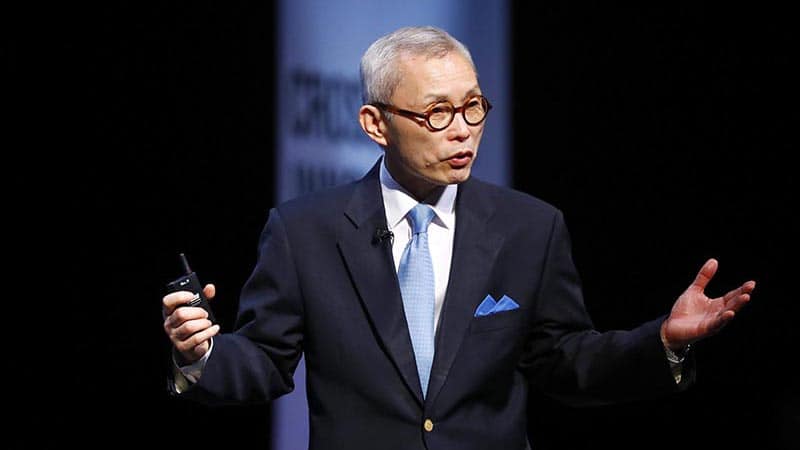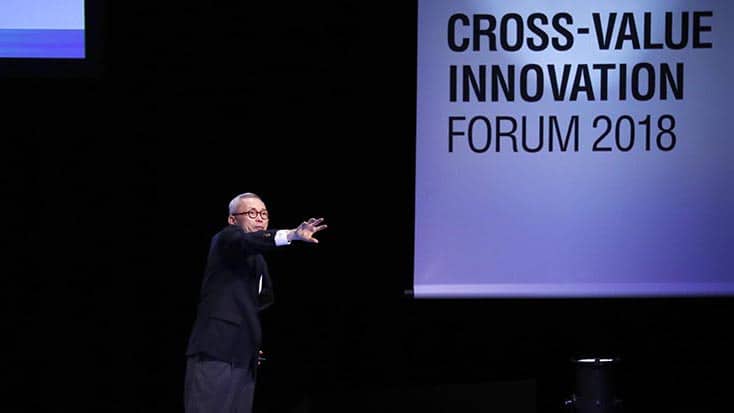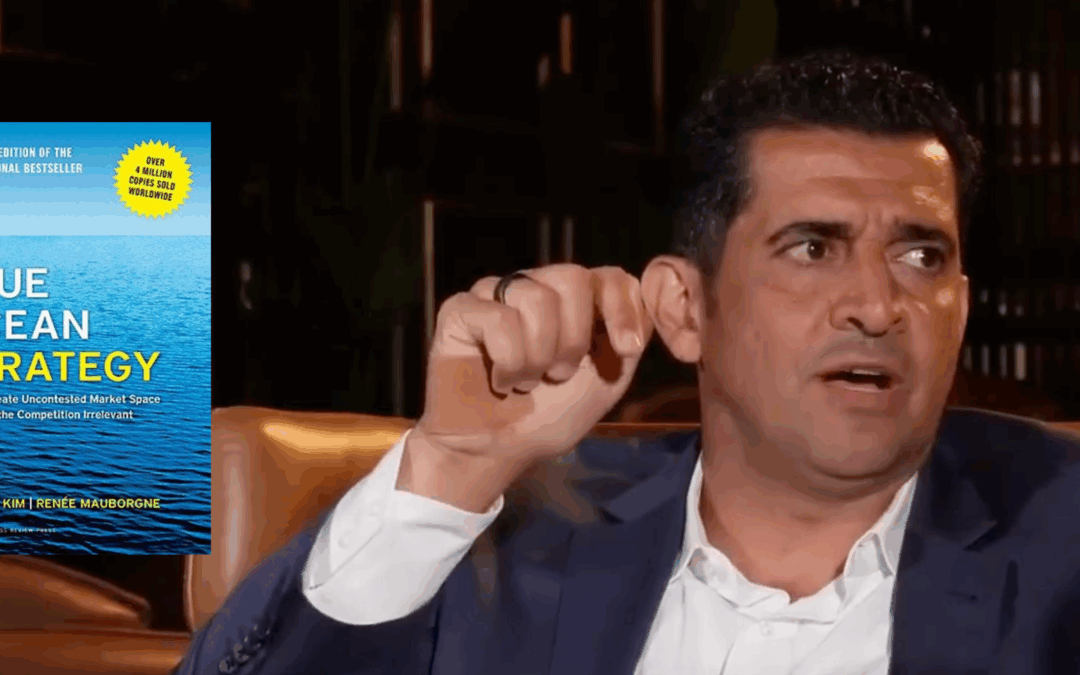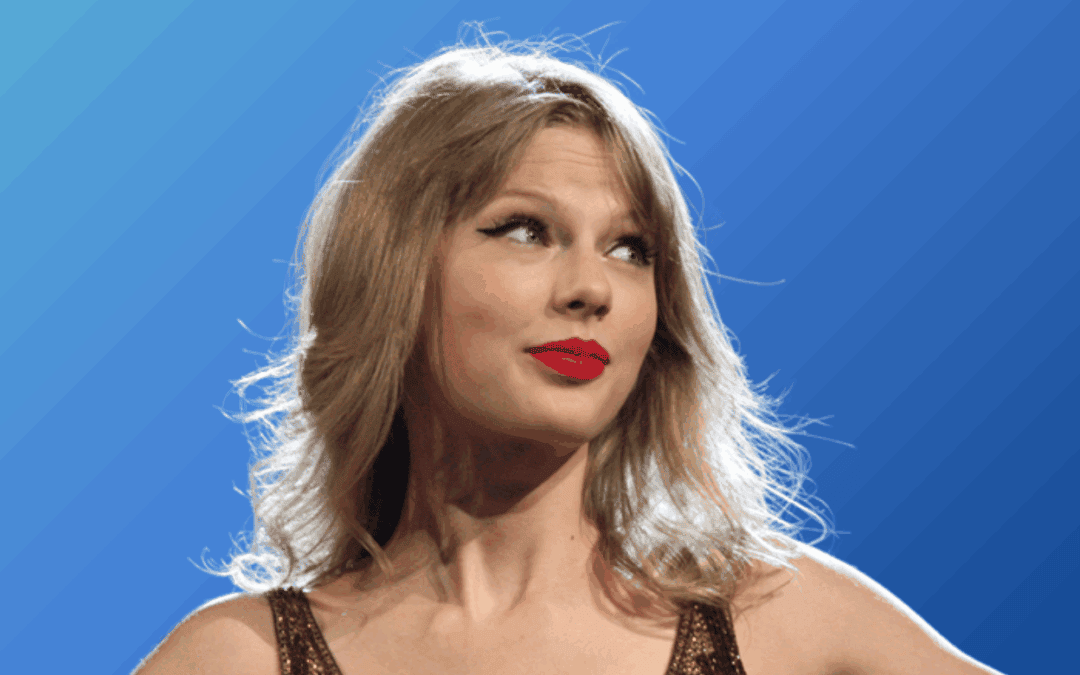How did Apple rise from the brink of bankruptcy in 1997 to become the first U.S. company with a market value of US$1 trillion this year? Was it because their iPods, iPhones, and iPads are innovative products?
Management guru Professor Chan Kim posed these questions and more to a packed hall of 3,000 business executives during his keynote at Panasonic’s Cross-Value Innovation Forum 2018 in Tokyo.
It’s value innovation, not technological innovation, that counts
Professor Kim noted that a fundamental aspect of Apple’s success was embracing technologies developed by others. “In 1997, Apple didn’t have the technology to break into the digital music market,” he explained. “So how did they make the iPod? They partnered with tech companies. They did the same with the iPhone – partnering with companies that made touchscreens, as they knew that the touchscreen was the future of phones. So even though Apple didn’t invent new technologies, they still managed to make big profits,” he said.
Chan Kim noted that technology innovation is not synonymous with growth. “Business is about making money by using technology; not about inventing new technologies,” he said. “This is why growth relies on value innovation.”
Create, don’t compete
According to Chan Kim, there is no such thing as a “bad industry”. Even if the outlook for an industry looks bleak, opportunities exist – they just need to be unearthed. To do so, organizations need to “create, not compete,” or shift from market competition to market creation. Kim explained that this requires companies to seek “blue oceans” of untapped markets instead of competing in “red oceans” of crowded, established marketplaces. “Don’t compete within small boundaries or on existing customers. Instead, create new demand and attract noncustomers to grow your business,” he advised.

“Organizations need to create, not compete”. Professor Chan Kim at the Panasonic Cross-Value Innovation Forum 2018.
Chan Kim presented the case of ActiFry, a French cookware manufactured by Tefal (owned by Groupe SEB), as one product that benefitted from adopting the “blue ocean shift tools and process.” Faced with intense competition, Tefal needed to come up with solutions to boost the weak sales of its home fryers. Instead of competing in an already crowded market space, it discovered new markets by identifying customer pain points the industry had long overlooked. One of those pain points was that traditional fryers needed lots of oil, which drove up the cost of using them. Using so much oil was also unhealthy and fattening. Tefal then developed ActiFry, which uses hot air and less oil to cook delicious fries that contain 80% less fat. The new home fryer enabled Tefal to gain customers and grow its industry by 40% in value.
Five steps to jump from a red ocean into a blue ocean
Professor Kim outlined the five steps organizations need to take to make the jump from red oceans of “bloody competition” to blue oceans of uncontested markets.
1. Begin by determining which business, product, or service to tackle, before putting together the team to carry out the initiative.
2. Understand the current situation by having a clear, shared picture of the existing strategic landscape.
3. Imagine the possibilities, by uncovering the hidden pain points in the industry and identifying noncustomers of the industry.
4. Design a roadmap to the goal by applying systematic paths to reconstruct market boundaries and develop strategic options.
5. Launch a “blue ocean move” by rapidly testing and refining according to your designed business model, and thereby maximizing potential.

“The blue ocean shift process can guide your innovation efforts”: Professor Chan Kim at the Panasonic Cross-Value Innovation Forum 2018.
Creating the future with the blue ocean shift process
Despite its effectiveness, a blue ocean initiative does not guarantee permanent success, Kim cautioned. “There will be other organizations that will imitate and compete in the new space over time”. He warned that businesses need to repeat the blue ocean shift process to continue to grow.
Chan Kim noted that Nintendo, a Japanese multinational consumer electronics and video game company, recognized the importance of revisiting the blue ocean shift process to sustain growth. He explained that Nintendo identified noncustomer segments of the video game industry and targeted them with the Nintendo Wii. For instance, to encourage the elderly to use the Wii, Nintendo ensured that the game console was easy to use and mimicked real-life activities such as golfing. Instead of resting on its laurels after the Wii’s success, Nintendo went back to the drawing board and applied the blue ocean shift process to develop its next popular game console, the Nintendo Switch.
“Although we do trial-and-error for innovation, we need a strategic framework like the blue ocean shift process that can guide your innovation efforts for growth in a systematic manner, allowing you to scale your success,” Chan Kim said.
You might also be interested in these related articles:
- Value innovation vs technology innovation: why technology innovation only counts when linked to buyer value.
- The rising importance of value innovation for creating new growth
- Invention vs innovation: the important difference for your organization’s future growth
- Why lowering costs and increasing value doesn’t need to be a trade-off


















